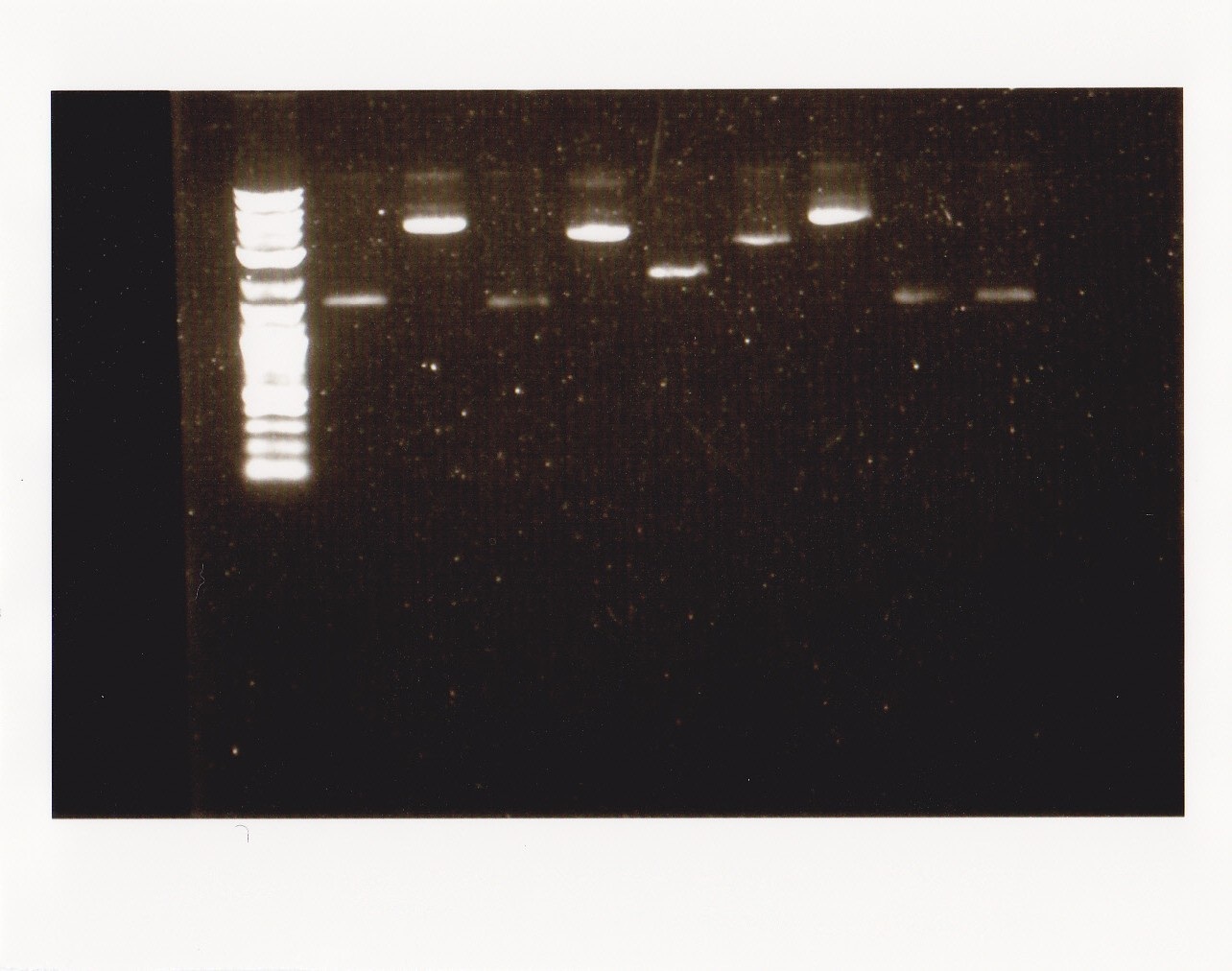Team:BU Wellesley Software/Notebook/VanessaNotebook
From 2011.igem.org
(→Week 3: 6/18-6/24) |
(→Week 3: 6/18-6/24) |
||
| Line 31: | Line 31: | ||
- Bba_E0430 (YFP composite) 1/A/8I | - Bba_E0430 (YFP composite) 1/A/8I | ||
- Bba_E0240 (GFP composite) 1/A/12M | - Bba_E0240 (GFP composite) 1/A/12M | ||
| - | Bba_R2000 (Promoter) 1/K/16F | + | - Bba_R2000 (Promoter) 1/K/16F |
Reporters: | Reporters: | ||
| - | Bba_E0020 (ECFP) 1/A/6A | + | - Bba_E0020 (ECFP) 1/A/6A |
| - | Bba_E0032 (EYFP) 1/A/6E | + | - Bba_E0032 (EYFP) 1/A/6E |
| - | Bba_K156010 (BFP) 2/A/4D | + | - Bba_K156010 (BFP) 2/A/4D |
Revision as of 04:11, 27 June 2011
Contents |
Week 1: 6/1-6/10
The first few days, the group sat through a boot camp, where we learned about biobricks, the basics of Biology such as DNA transcription and translation, and how to use Clotho tools. As exposure to the more computer science aspect of the project, the group learned how to write a Clotho application.
As a test run, mini preps (protocol link) were performed on a few samples of biobricks that were previously plated and transformed. Most of these samples unfortunately did not yield a high concentration of DNA, except for a few. After quantifying the samples, the samples were loaded on a gel next to a ladder to confirm the DNA that was present. However, most bands did not appear on the gel after exposed to the UV light. This concluded that there was no DNA in the samples that were being looked at. Next, several transformations were made for biobrick parts such as RBS, RFP, and constituent and inducible promoters.
The transformations produced several cultures that were both dark and light in color. Plasmid preps were made of the dark and light cultures of the UV promoter. The dark culture had an okay amount of DNA concentration. However the other samples did not have a good concentration of DNA either.
There seemed to be contamination or something else growing on the plates because some of the cultures were oddly shaped and there was a pungent smell. As a result, a sample of plasmid prep culture was stained and looked under the microscope. Most samples did not have E. coli in the sample.
Week 2: 6/11-6/17
A second round of plasmid preps were made of the same plates to troubleshoot the cultures that do not have high concentrations of DNA. These unfortunately still did not work or produce anything. Only the UV promoter sample had a culture.
This week the BU Wellesley team is demoing the QIAcube from Quiagen. Plasmid prep of the UV sample was used to start up and learn how to use the QIAcube.
It seems that the problem is the plates with ampicillin. A sub-group of our team were working on putting together the GFP (Bba_J52028) and terminator (backbone, Bba_B0015) to test out various RBS and promoters combinations. Once the GFP and terminator were ligated together, the construct was transformed on a Kanamycin plate. This successfully grew on the plate. Other parts were transformed and grew nicely on the Kanamycin plates. As a result, it is believed that the ampicilling plates are not selecting because there was also a negative control plated with just top 10 cells and there was some growth seen on the plates.
New ampicillin plates were made.
New transformations were made of the 7 original parts chosen and few additional ones (RBS, promoters, RFP). Most of these seem to grow successfully, however 2 plates had cultures with a pink tint to them. There was one plate where nothing grew on it. There was also two negative controls for ampicillin plates and kanamycin plates, where nothing grew. Plasmid preps of the new transformations were made.
Week 3: 6/18-6/24
- Prepared plasmid preps and continued to used the QIAcube for minipreps of biobrick parts:
Composite Parts:
- Bba_E0430 (YFP composite) 1/A/8I - Bba_E0240 (GFP composite) 1/A/12M - Bba_R2000 (Promoter) 1/K/16F
Reporters:
- Bba_E0020 (ECFP) 1/A/6A - Bba_E0032 (EYFP) 1/A/6E - Bba_K156010 (BFP) 2/A/4D
 "
"
